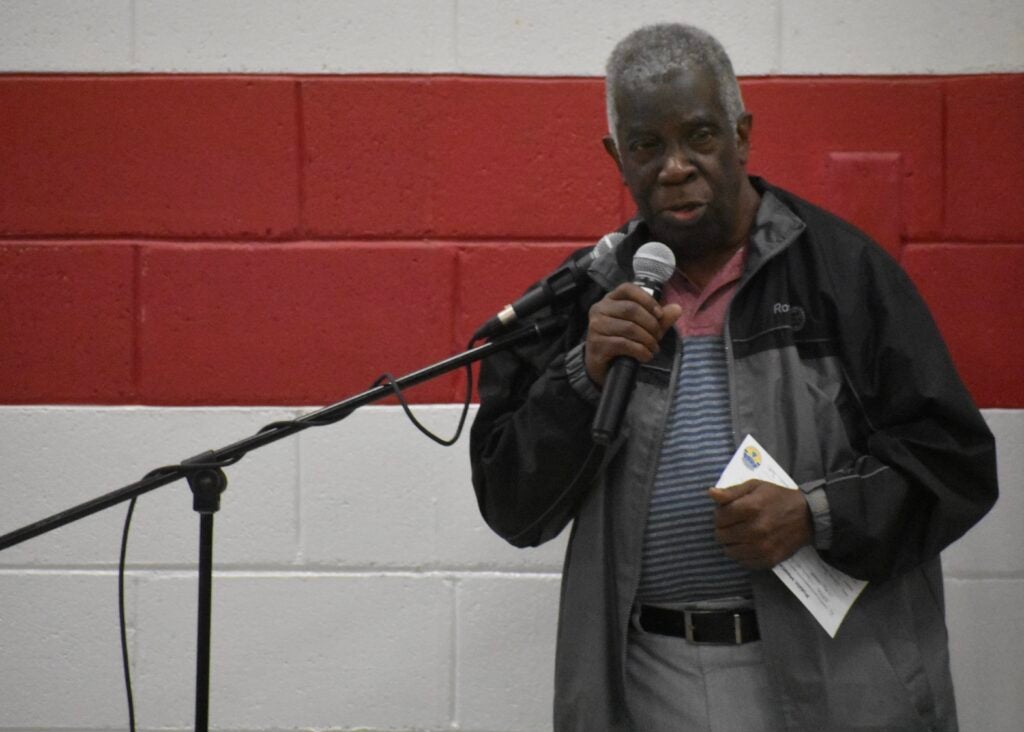Tutt Middle School parents and alumni shared historical preservation concerns during Wednesday evening’s feedback meeting for the county’s proposed Comprehensive Facilities Plan.
Created by HPM, a company which specializes in large-scale capital improvement projects, the district’s drafted plan suggests school consolidation and large-scale student and staff reassignment to gain more state funding.
If approved by the Richmond County’s Board of Education, some changes would begin over this year’s fall season and continue until 2028. However, the board will only be voting on 2024-25 implantations, while gradually collecting further feedback on other future plans.
The plan’s more immediate adjustments for the 2024-25 school year would result in the current Richmond Hill K-8 and Belair K-8 school being turned into a consecutive new elementary and middle school, as well as a rebuild of Langford Middle School that would cause students to be reassigned to Tutt Middle.
Additional changes would cause the closure of A. Brian Merry Elementary School, Spirit Creek Middle School and Tutt Middle School.
After evaluating population trends and existing school facilities, HPM’s Vice President of Planning Services Tracy Richter explained that Richmond County needs to eliminate smaller schools to implement more programs and hire more staff.

Currently, Richter said 16 out of RCSS’ 28 elementary schools, six out of eight middle schools, and four of eight high schools are below enrollment needed for minimum program state funding, which is preventing the education system from effectively and efficiently growing.
“I don’t think we’re going to be able to make everyone happy with a plan like this. There’s just no way to do that,” he said. “So, it’s going to be hard to come together on some of these decisions, but I want you to understand how we got there … it requires a vision.”
Richter said, if the county adopts his team’s plan and gains more funding, schools can offer more programs and hire more staff.
MORE: Parks and Recreation director dodged bullet with resignation
“When the funding is not there – or when we have to stretch our funding across the board – to the point where we can’t get all the programs then we have a problem,” he said. “… we have to get these schools at full enrollment for more funding.”
Richter said a significant factor in the county’s steady decrease of enrollment is a result of less births occurring every year.
“I can’t increase enrollment if they’re not born, and this is happening everywhere,” he said. “… the trends are people aren’t having more babies and they are waiting longer to have children.”
In addition, Richter said he understands that many families are concerned about closing schools and losing historical sites and “legacies,” however, holding onto such ideals without impressive programs will only prevent the county from optimizing funding and school space.
“We have to pay attention to this,” he said. “Kids aren’t chasing legacy – they are chasing programs and opportunities. They are chasing the curriculum that they need.”

Following Richter’s presentation, after explaining how Langford and Tutt would temporarily combine for a year or two, several Tutt parents, staff and alumni shared worries about preserving the school’s family environment and Black history.
Alumni Donald Davis, who attended Tutt in the late 1950s said he was worried that combining with Langford would allow the school’s history to be forgotten or swept under the rug.
“I want to make sure that the legacy of John Tutt be a part of that,” he said.
Fellow alumni Bobby K. Dunn said he was also worried about maintaining Tutt’s legacy and the continual memorial of the school’s history.
“We’re really concerned about keeping [Tutt’s] name alive,” he said. “He was something else … a very educated man, and that’s Black history right there.”

Longtime Tutt teacher Ethie Kulling said she and the other staff were very upset to learn of the school’s possible shut down from parents and news media, rather than directly through the school board.
“I really would’ve appreciated it if you all would’ve let us employees know what was going on, instead of our neighbors and parents telling us on the day it went public,” she said. “Because I kind of feels like we got pushed to the back, along with our kids.”
Kulling afterwards stated that many Tutt employees have worked together for two to three decades, and both faculty and students were concerned about school rivalry and violence interrupting the close Tutt environment.
“My coworkers are like my family members. When your kids come to school, they know that they are loved and cared for,” she said. “It’s a nice plan … but Tutt has always been a well-run school. My co-workers and I have been together for 18 years. How many people can say that?”

Cristi Cole, another experienced educator who has taught at Tutt for 31 years, said she felt that the Facilities Plan read well on paper, but it would result in some early-on challenges while students adjusted to each other.
“I think we need to come together,” Cole said. “Tutt is my baby, and Tutt is truly a family … and we want that same camaraderie with those from Langford if we become one school. We need to be one together.”
Despite Cole’s vote of confidence in staff ability to peacefully work together, Tutt parent Chante Myrick said she felt the county was underestimating and downplaying the impact possible violence could have on students and the campus.
“They’re really overlooking it, because [gangs] are in the middle school and high school levels,” she said. “It’s not safe, but [the board] doesn’t see the bigger picture.”
Richmond County Board of Education President Charlie Walker, who attended Tutt over 40 years ago, said he sympathized with both concerns, but felt neither should keep the plan from moving forward.
“I’m part of this alumni association and the history of this school. I love this school, too, but at the end of the day it’s just a bunch of cinderblock, some tiles and carpeting,” he said. “The memories and people who went here will still be here, and there’s no guarantee that we will knock this building down.”

Referencing how the former National Hills Elementary School was repurposed into the county’s E-School facility, Walker said he was confident the building might be used for something new to benefit the education system, such as a new training ground for educators.
Walker also said the board could also consider different forms of memorializing the closing and changing schools.
“We could create some sort of memorial wall or trail where people can push a button and hear stories from alumni who went there and such,” he said. “There are many things we could do like that which would keep it alive.”
Attributing many of the education system’s violence issues to online communication and bullying that occurs outside of school hours, Walker said parents’ concern regarding violence increasing from students sharing buildings or being combined was a symptom of social media and unsupervised technology usage.
“They leave here and then use their phones to talk and argue with people from another neighborhood and rile things up, and then they fight here because it’s the common meeting ground,” he said. “… we’re trying to put more safety measures in place to deal with it, but we’ve found that metal detectors aren’t cheap, and if we get more state funding it could be used towards that.”
To Walker, some facility rivalry is healthy as it allows children to be prideful of school, and it breeds beneficial competition, however, those with worse intentions could only be combatted to a certain extent.
“People who want to do harm and have bad intentions will find a way,” he said. “There’s only so much safety measures can do, but we’re trying and this plan could help.”
Next informational meeting will take place the evening of March 7 at Richmond Hill K-8 School, located at 3420 Julia Ave., starting at 6 p.m.
For more information about the Comprehensive Facilities Plan and other future informational sessions, visit: https://www.rcboe.org/cms/lib/GA01903614/Centricity/Domain/15585/RCBOE_DRAFT_RECS_03012024%202024-03-04%2020_17_49.pdf or https://www.rcboe.org/planning













